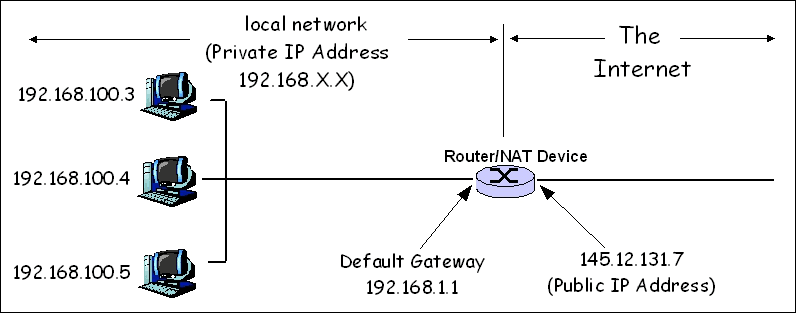Basic Understanding of IPv4 address
So,what is an IP address?
Basic explanation:
An IP address is an Unique identity number given to any internet enabled device(ex: Mobile phone, Smart TV, IoT devices,etc) which helps in differentiating the devices on internet aswellas provides a way to communicate with other internet enabled devices.
Versions of IP addresses till date:
- IPv4(most widely used version)
- IPv6
Now we are gonna have the basic understanding about IPv4 address:
Some required terms to be understood initially:
1.Public address: A public IP address is the address that is assigned to a computing device to allow direct access to that device over the Internet. A public IP address is globally unique, and can only be assigned to a unique device.
2.Private address: A private IP address is the address that is assigned to a computing device inside a LAN network( ex: network of connected devices to the wifi router is called a LAN network) which is unique only inside the LAN network. Wthout the help of Public address; the Private addressed devices cannot directly communicate with other devices on the Internet.
More clearly, All devices connected to a wifi router have a Private IP address which is unique among
the devices connected to that router and the router’s internet facing side will have the Public IP
address (unique IP address on the entire Globe), which helps the LAN connected devices to communicate
with other networks on the Internet.

3.Dynamic IP allocation: When were the device is connected to Internet, the router gets an Unique Public IP address and the devices connected to router gets an Unique Private IP address. When the Internet connection is disabled and enabled; the IP addresses will change.
Dynamic Public IP address is assigned by our ISP (abbreviated as Internet Service Provider,
for ex: Actcorp fibre, Jio fibre,Airtel,etc).
Dynamic Private IP address is assigned automatically by the DHCP service inside the wifi router.
4.Static IP allocation: Even if you disable and enable the Internet connection; the IP address wont change. These IP addresses are used for Web servers, online games for Port Forwarding,etc.
Static Public IP address is assigned by the ISP for a minimum extra amount.
Static Private IP address can be set on the router configuration setting by disabling the DHCP allocation feature.
An IPv4 address is 32bit binary, which provide approx. of 4.3 billion unique addresses which means
4.3 billion devices can be connected to the internet at the same time.
IPv4 representation:
![]()
Who is responsible for IP address allocation?
The Internet Assigned Numbers Authority(IANA assigns IP addresses to regional internet registries (RIRs)(there are a whole of five RIRs in world). The RIRs assign them to Internet Service Providers. Internet Service Providers then assign IP addresses to their customers. Very often, people have a router or gateway at home, to which they connect computers, printers, and other devices. These routers or gateways are often configured to assign “local” IP addresses to the devices that are connected to them.
Now you may get a doubt that, are these 4.3 billion IP addresses enough for representing every device on the Globe?
Your doubt is correct and thats the reason why DHCP(Dynamic Host Configuration Protocol) concept was developed.
This DHCP server will be installed in the wifi router which helps in connecting all the devices in the home to a router and helps in indirect connection of all the LAN connected devices to the Internet through a single Public IP address.
This way, many devices are connected to the internet through a router with single Public IP address. So the answer for the above question is YES.
And another doubt you may get is, How many devices can be connected to a router?
The answer is, it depends on the Subnet mask of the router.
For maximum home routers the gateway IP(the starting Private IP address which is assigned to the router) address will be 192.168.1.1 or 192.168.0.1 and the subnet mask will be 255.255.255.0 which means the first 24 bits (192.168.1 or 192.168.0) of the gateway address will be fixed and the last 8 bits will represent the LAN connected devices. Since 8bits conbinations are 255, the total devices which can be connected to the router will be 255 devices.
Till date the IPv4 addresses are enough to connect all the current devices to the internet but in the future due to exploiting increment of the internet enbled devices IPv4 may not be sufficient….
Then everyone should shift to IPv6 addresses which is of 128bits.. Can you imagine its address space..its 340,282,366,920,938,463,463,374,607,431,768,211,456 which is almost 340 trillion.. which means each and every living and non living thing on the Earth can have an IPv6 address and still many addresses remain unused.
References:- 1. IP addressing
2. Networking
3. Internet Assigned Numbers Authority
Click below to
Subscribe
Let us know your doubts on this article in the comment section below!